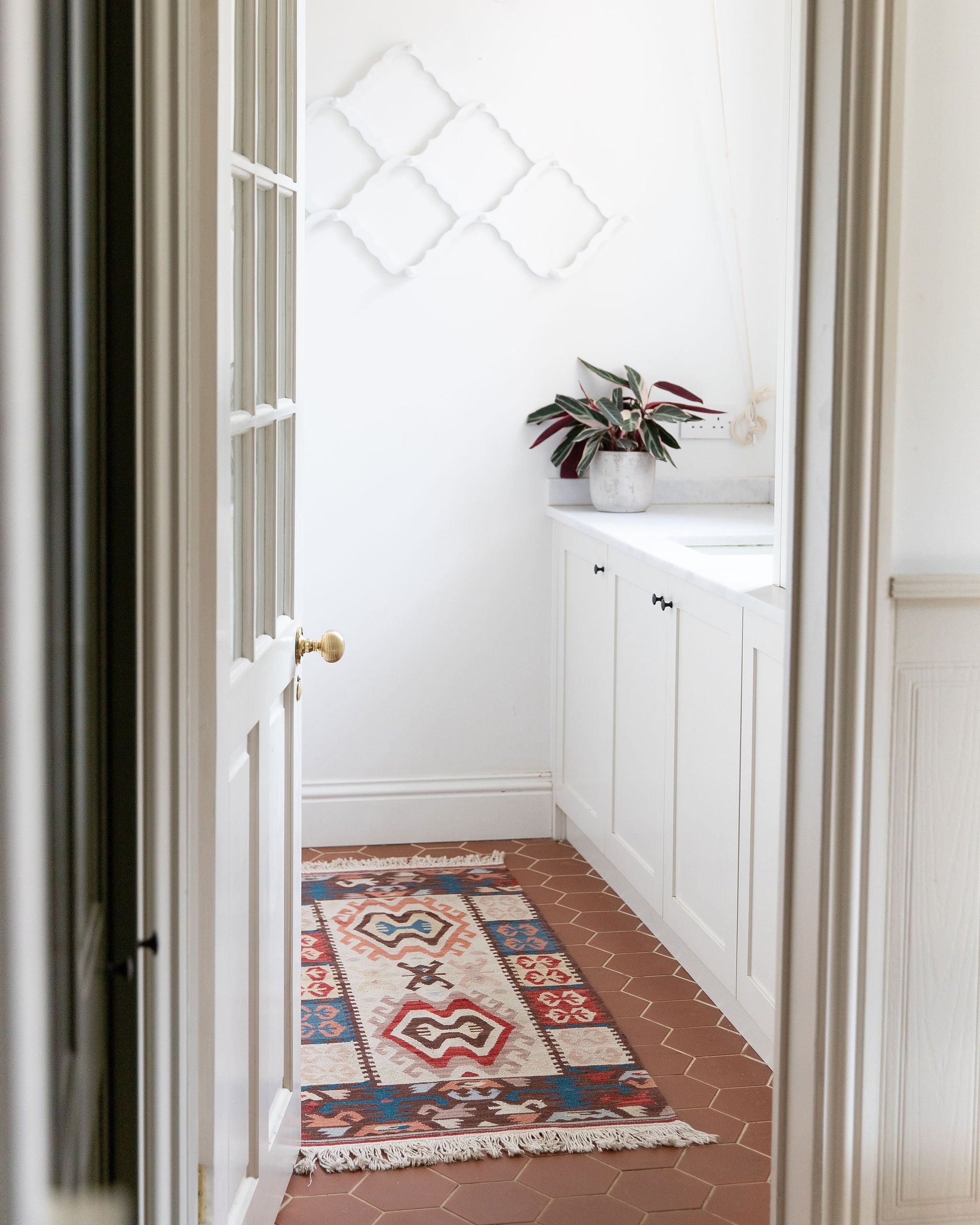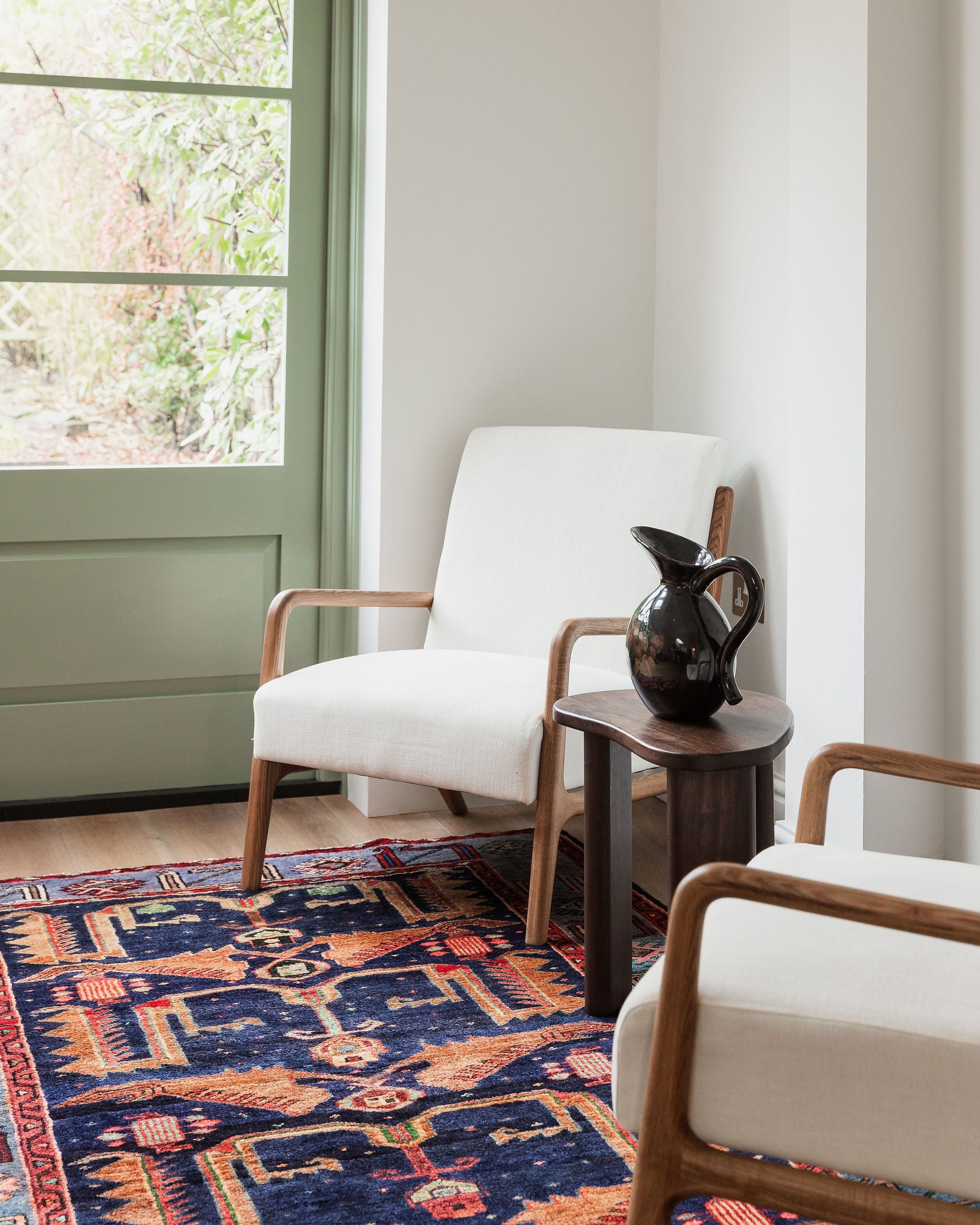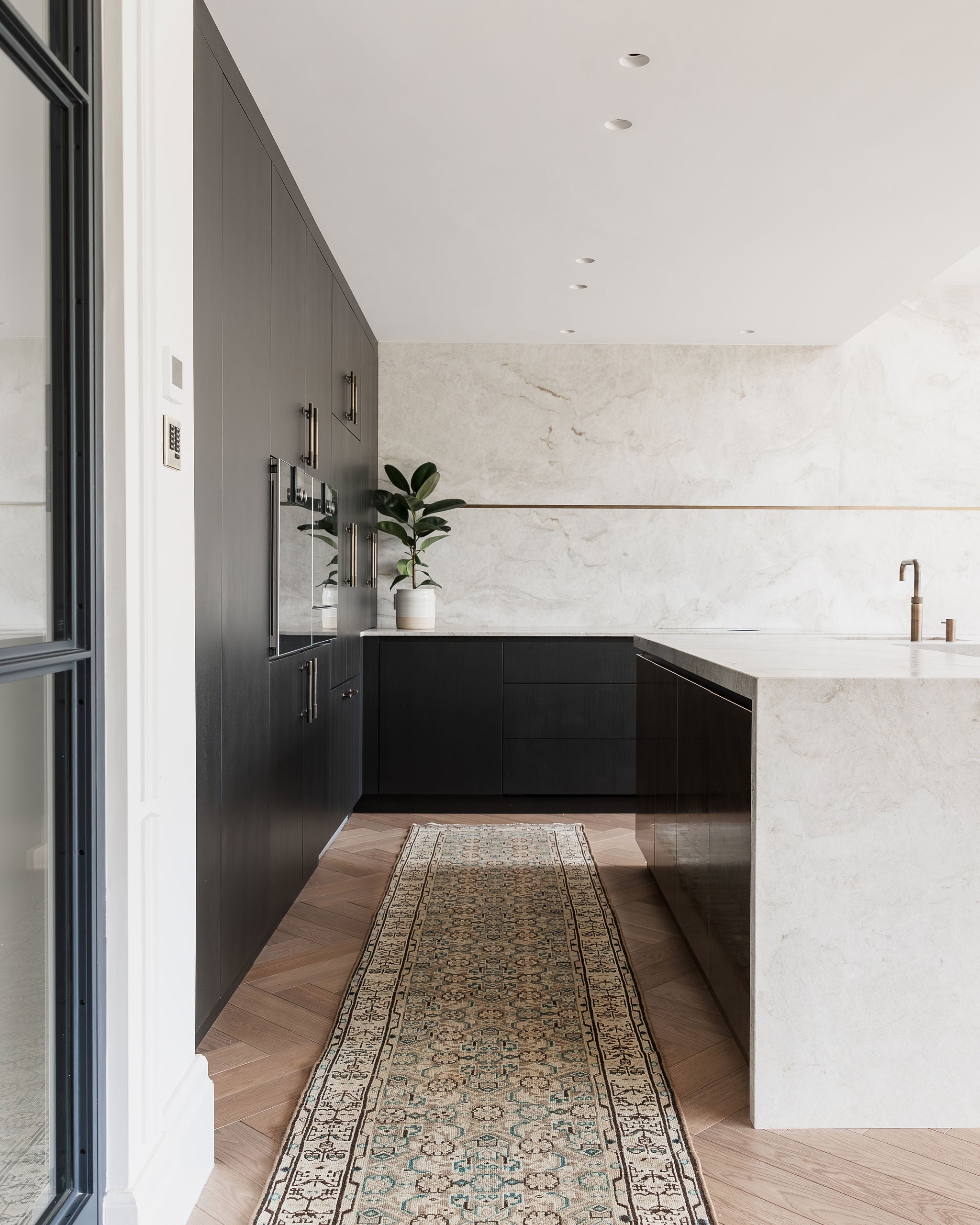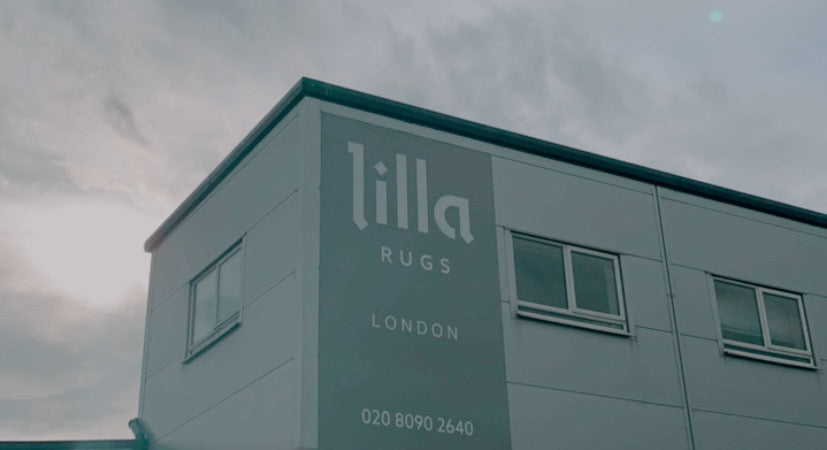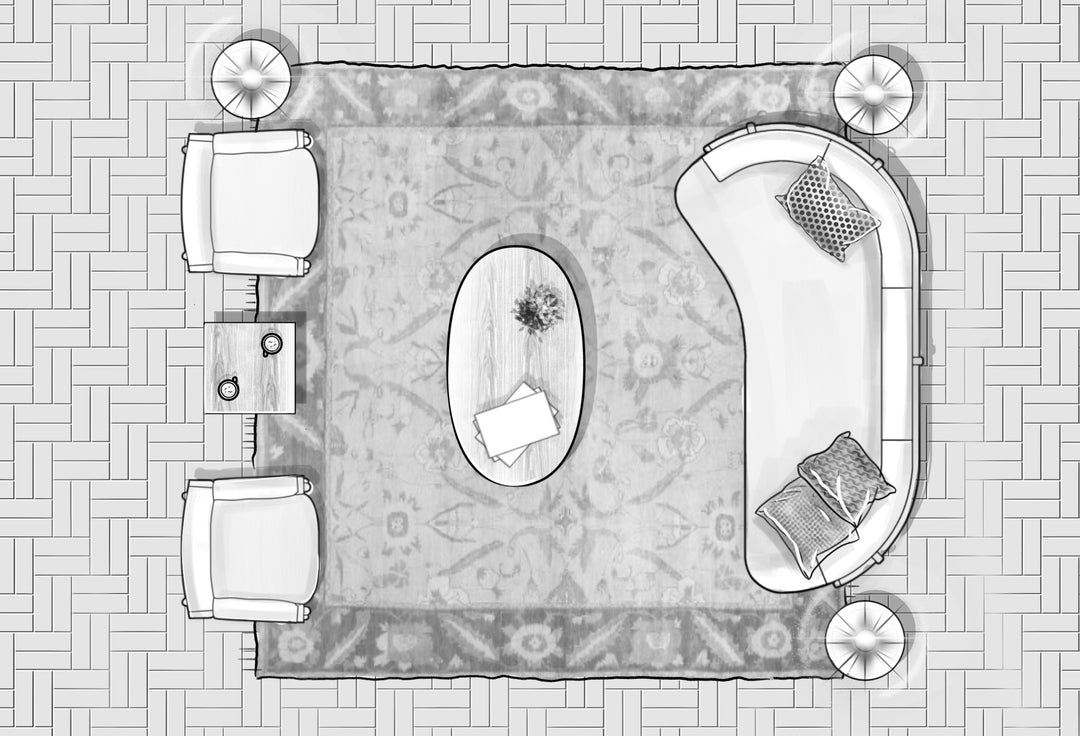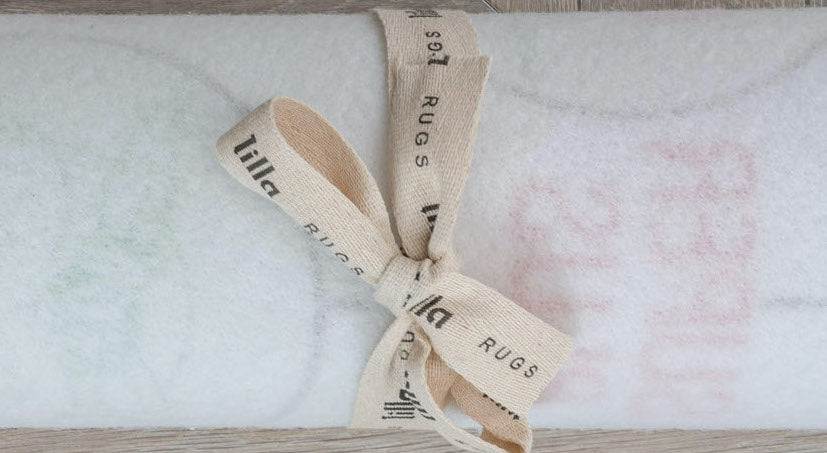So Tell Me, Why Are Persian Rugs So Expensive?
A question that, understandably, comes up rather a lot is around the amount of DOSH you need to spend on some Persian rugs, and why. Why do some cost more than others? What is the difference between the expensive choices and a Persian style rug in IKEA? Is it a good investment? How do I know it’s worth the money?
There are so many answers to these questions, and I hope I can bring some clarity to at least a few.
- Time
The number one thing to remember is that Persian rugs, and every Lilla Rug for that matter, is made entirely by hand. Think about what that really means for a rug. From the sourcing of materials to weaving every single individual knot, it’s all done without the use of machinery. The result of this is time. It takes time to weave a rug. It’s like knitting, x1000. Some take months, others take years. It depends on how much time is being spent on the weaving each day, the size of the rug, and the materials used. The finer the materials (such as silk) the longer it will take.
- Materials
A big factor that comes into play with Persian rugs and their cost is what material they are made from.
Silk-on-silk rugs are handwoven with a really fine, but strong, silk thread, with a silk foundation too. As the silk is so fine, it takes millions of knots to create the rug (which also takes longer to weave) and gives a really clear and detailed pattern. This also makes it much harder to create, so very skilled artisans work on the silk rugs. An analogy we often use is like watching normal TV and HD. The silk rug is HD. Clear, and life-like.
The village of Qum (Qom), in southern Iran, is the most well-known area for producing silk rugs, which is why the majority of them are named 'Qum Silk Persian Rug'. How do you know if the rug is made from real silk? A little trick: rub the palm of your hand over the surface for several seconds and if your hand gets warm, the silk is real! Manufactured silk doesn’t warm to the hand.
You then have combination silk rugs, which use silk for certain parts of the rug, but have a wool & cotton foundation. This adds a touch of HD to elements of the design, but not all of it.
The majority of Persian rugs are wool & cotton. The wool can sometimes be ‘kork’ (an extra soft type of wool) or merino. These are really durable materials and 100% natural. Cotton is again finer than wool, so they take longer to weave than a 100% wool rug.
The least expensive (although still extremely good quality) Persian rugs are the tribal/ nomadic rugs, which are made from 100% wool. The tribes that made these rugs traditionally had no access to anything other than wool and wanted something to keep their families warm.
- Size
“The value of an Oriental rug is determined by the same factors that set the value of any work of art: authenticity, rarity, quality & condition. Plus, they are like diamonds — the bigger they get, their prices shoot through roof!” CNBC
If a rug is made by a machine, it's unlikely that size will have a huge effect on the cost. The expense is setting everything up on the machine - the materials, the design. With a handmade rug, this is not the case. every centimetre you add to the size of the rug is another couple of hundred knots for that set of human hands to create. So the bigger it gets, the more time is needed, and so the cost naturally increases.
- One of a kind
Every handmade rug is one of a kind. No two will ever be the same. Occasionally a pair will be made at the same time, so will be almost the same. But if you look closely, you’ll see differences. So, this, of course, affects the price. Any exclusive item comes at a premium. With machine-made rugs, on the other hand, you can be sure that there will be lots of the same rug made – instantly lowering the value.
- Design
There are hundreds of different Persian rug designs that usually derive from the city or village they were made in. Depending on where the rug was made will affect the value of the rug. For example, a Kerman, Tabriz, Nain, Isfahan or Kashan rug, with fully executed designs, fringe woven into the carpet and slight signs of wear, would be a high-value Persian rug.
6. Investment
If you look after a Persian rug well (keep footfall low, get it professionally cleaned every 5 or so years), it will at the very least maintain it's value, and sometimes it will go up in value as time goes on.
When a Persian rug reaches about 30 - 99 years old, it goes into the category of 'Vintage'. Once the rug gets to 100+, it becomes at 'Antique' rug.
The older some Persian rugs get, the more likely they are to become rare. Rare = high value.
It's important to always ensure you seek professional advice on what a rug is worth. So many things can mean that even a really old Persian rug isn't worth as much as you thought it was. This could be down to washing with chemicals, too much direct sunlight leading to fading, or lots of damage as it's been in a high traffic area for many years.
The list really does go on! Hopefully, this explains a little, and as always, if you have any questions, do just ask. (Or check out our FAQ section) We'd love to hear from you! Now you know what makes our Persian rugs so special, why not take the next step, and have a read of our starter guide to buying a Persian rug.


